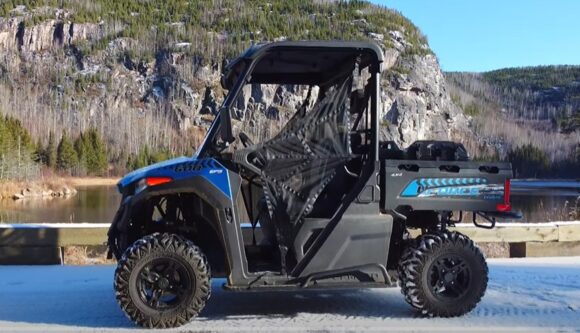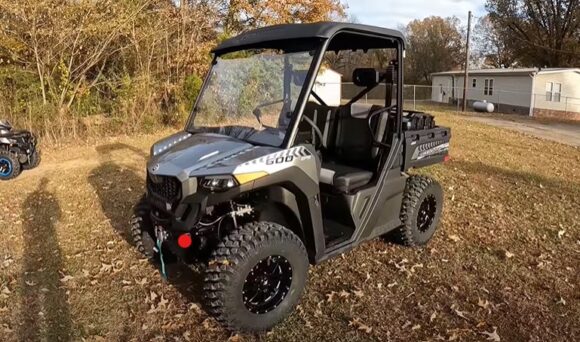Arctic Cat Wildcat 1000 is a powerful and versatile UTV that offers impressive performance for all terrains and any trail.
However, it’s never always bread and butter because Arctic Cat Wildcat 1000 has problems too, just like any other machine.
Common Wildcat 1000 problems include the engine not starting, idling, misfiring, bad steering, and cracks in hubs, cranks, cases, and belts.
Other problems might include but are not limited to issues in the fuel pump, rich engine, limited mud protection, and the seat kit being uncomfortable.
Let’s uncover all these Arctic Cat WildCat 1000 problems in detail with a potential fix for each.
Arctic Cat WildCat 1000 Problems
These are the most common problems of the Arctic Cat Wildcat 1000 UTV.
Knowing all these problems and fixing them ASAP can make your Arctic Cat Wildcat 1000 great and smooth again.
1. Engine Not Starting Out
The most common problem of this UTV is its inability to start the engine after a long rest or to not start at all. In any case, the machine won’t move due to a problem with its Starter.
This problem is common in many pre-2017 models. This happens due to issues with valves and spark plugs. The battery and electrical components may also contribute because some of its owners noticed problems with the terminal to rust.
For that, make sure its battery is not exposed so it should not get any splash of water and eventually prevent rusting. Also check any existing points of rust, especially in terminals, and apply a dielectric grease after a thorough cleaning session.
Recheck and ensure the terminals are connected properly. Don’t forget to tighten these connections so the battery could transmit the volts to its fuel injector.
If any nuisance was due to electrical problems, it must be sorted this way. But, if it still exists, move on to the “mechanical fixes” now, particularly to its valves, carb, and plugs.
Make sure its spark plug is in great condition and working fine by looking at it for once. If there’s any carbon or oil content on it, better replace it with a newer one.
This time, get a perfect match for your Wildcat 1000 as per your owner’s manual or an NGK Iridium Spark Plug.
Also, make sure its intake and exhaust are compressing well. Tight or loose valve clearance can affect the fuel mixture, combustion, and ignition to not start your engine.
Ensure a proper valve clearance as per your owner’s manual recommended value so it functions well.
2. Engine Misfire
A common engine problem of the Arctic Cat Wildcat 1000 is that it certainly misfires.
It happens due to multiple technical reasons such as a problematic ignition coil, vacuum leak, and timing problems being most common.
The best way to deal with engine misfires in Wildcat 1000 is to seek expert advice for checking the opening and closing of valves at the right time.
If this isn’t in proper alignment, the piston may not move correctly, causing its engine to misfire.
You can hear knocking sounds and a visual inspection can also help in identifying any misfire. There are several DTC codes for misfires to identify exact problems in a component on the ECU.
So, if you get a code P0304, it says there’s a misfire in Cylinder#4.
Inspecting and replacing a spark plug, leakage in gasket or vacuum and any damage to its cylinder or fuel injectors can cause it. You may need to fix them once you get a code on your OBD 2 Scanner.
3. Bad Steering
This problem arises mostly in the 2011 to 2015 Wildcat 1000 variants where a slider of steering gets any gap or play causing the steering rod to not function properly or responsively.
2015 and older variants have this failure due to wear-out bushings and replacing them can be an immediate fix. But, it is still not a lifetime fix as it will wear out again later.
The best solution would be to either rebuild the slider along with its rod and the pad or just change the steering system.
However, this replacement should be only done when you keep getting this issue again and again, you mostly ride on muddy tracks and your steering is hard with a poor turning radius.
4. Fuel Pump Problems
Another common issue with Wildcat 1000 is in its fuel pump. There are technically two main problems in a fuel pump affecting its performance, acceleration, and torque.
If you have installed a damaged and excessively used oil filter in the machine, it’s likely to have expired and not been able to filter debris and particles present in the gas.
The quality of Fuel also matters in improving or reducing the life of a fuel pump.
As a result, the filter is almost completely blocked. Also, if you are not using a high-quality filter, the chances of improper functioning of the fuel pump motor are high. It may also reach a point when there’s no option left but to replace this pump which is a costly thing.
The second problem however is a malfunctioning fuel relay due to rusting.
Luckily, these relays are cheaper and easy to replace than a complete fuel pump. 92 and especially 95 octane gasoline is what you need for better functioning and improved performance.
5. Engine Running Rich
An uncommon but serious problem with the Arctic Cat Wildcat 1000 is that its engine runs rich especially when you throttle the machine. This not just wastes gas and ruins different components, but also affects performance and fuel economy in the long run.
When the mixture of air and fuel is not balanced or fuel content is higher than air, the engine causes engine richness.
A rich engine can be a sign of problems in Fuel injection, clogged air filters, carbon build-up, and a malfunctioning carburetor due to some play in between their valves.
To fix a rich engine problem, you need to clean its carb and may also need to rebuild. If possible, replace it with a new carb to avoid any mess.
Replacement of fuel injectors and on-time periodic maintenance can revive the complete combustion and make it fuel efficient once again.
Frequently Asked Questions
What is the top speed of an Arctic Cat Wildcat 1000?
60 MPH.
What engine is in the Wildcat 1000?
The Arctic Cat Wildcat 1000 is a 4-stroke, 8-valve 951cc engine with a liquid-cooled EFI fuel system.
How much HP does an Arctic Cat 1000 have?
More than 90 horsepower.
How much does a Wildcat 1000 weigh?
1305 lbs.
Is Arctic Cat WildCat 1000 Worth Buying?
Despite having these problems, the Arctic Cat Wildcat 1000 is still worth buying due to its powerful engine with a decent turning radius and optimal fuel economy.
Wildcat 1000 has a liquid-cooled engine to prevent overheating issues. 13” High ground clearance and trailing suspension shocks with power steering provide a good riding experience.
The durable frame with a 90hp powerhouse engine fulfils your power needs and provides responsive acceleration for ATVs and off-road enthusiasts.
All these features strengthen this machine and build up a great ATV to make it worthy for riders.
Source:
Arctic Cat Wildcat 1000 Long-Term Test
Is Your Engine Misfiring? Here are 6 Possible Causes
95 Octane Unleaded Fuel with no Ethanol
Related Posts:
Arctic Cat Prowler 1000 Problems
Arctic Cat Prowler 650 Problems


